Imagine a Day Without Water 2016
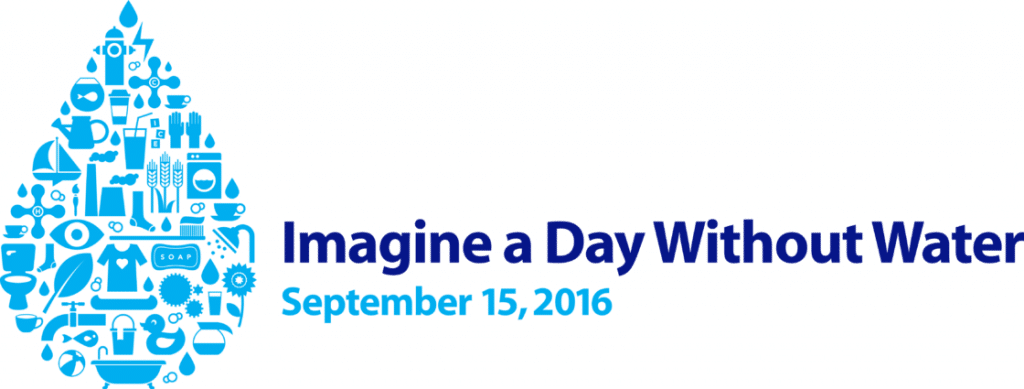
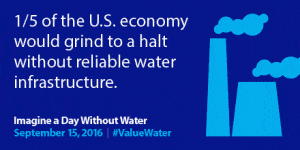 Imagine a day without water. Nearly every single thing we do is reliant on water. Right at the start of our day, we would not be able to use the bathroom, take a shower, brush our teeth, or make a cup of coffee. There would be no cleaning dishes, mopping floors, or cooking food. Water is something we use constantly throughout the day without even thinking about it, and has therefore become something we take for granted. For that reason, Imagine a Day Without Water was first introduced in 2015 in order to bring awareness to the value of water.
Imagine a day without water. Nearly every single thing we do is reliant on water. Right at the start of our day, we would not be able to use the bathroom, take a shower, brush our teeth, or make a cup of coffee. There would be no cleaning dishes, mopping floors, or cooking food. Water is something we use constantly throughout the day without even thinking about it, and has therefore become something we take for granted. For that reason, Imagine a Day Without Water was first introduced in 2015 in order to bring awareness to the value of water.
Think about how frustrating it is when our internet or cell phone service is interrupted. Having no signal or losing WiFi on our laptops can grind work to a halt, as well as bring about headaches and aggravation — but it doesn’t actually affect our health or our lives. And yet, in America we pay approximately $50 per month for internet, $75 per month for our cell phone bill, and a whopping $100 for the luxury of cable television. Ironically, the average monthly water bill is only about $30, and people often bemoan the fact that the cost of water has been increasing in recent years. The reality is that providing safe, clean drinking water and treating our wastewater is extremely complicated – and costly.
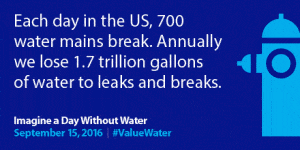 Think about the way water enters our homes and businesses, and of how our wastewater leaves it. There are literally thousands of pipes underground that we never see, and many of these pipes are approaching the end of their useful life. After all, most of our infrastructure was built around the time of World War II, and is now over 70 years old. In fact, much of the infrastructure in New England is well over 100 years old. These pipes and treatment plants are in desperate need of repair and replacement. In addition, our drinking water is treated to meet increasingly stringent regulations that protect our health. Bacteria, toxins, metals, and other harmful substances are all removed from the water prior to it entering the distribution system, and this treatment is expensive. In the same way, the wastewater that leaves our homes and businesses is highly treated and cleaned before it is returned to the environment, protecting public health from the myriad toxins and diseases found in untreated wastewater.
Think about the way water enters our homes and businesses, and of how our wastewater leaves it. There are literally thousands of pipes underground that we never see, and many of these pipes are approaching the end of their useful life. After all, most of our infrastructure was built around the time of World War II, and is now over 70 years old. In fact, much of the infrastructure in New England is well over 100 years old. These pipes and treatment plants are in desperate need of repair and replacement. In addition, our drinking water is treated to meet increasingly stringent regulations that protect our health. Bacteria, toxins, metals, and other harmful substances are all removed from the water prior to it entering the distribution system, and this treatment is expensive. In the same way, the wastewater that leaves our homes and businesses is highly treated and cleaned before it is returned to the environment, protecting public health from the myriad toxins and diseases found in untreated wastewater.
Failing pipes from our aging infrastructure also account for an astronomical amount of clean, treated drinking water that never reaches the consumer, and is never billed. This “lost” water comes at a staggering cost. To put it into perspective, the cost of this lost water is approximately $2.6 billion annually — which is approximately equivalent to the annual amount that the federal government allots to fund our water infrastructure — and the 1.7 trillion gallons of lost water is about the same amount of water needed to fully supply America’s ten largest cities.
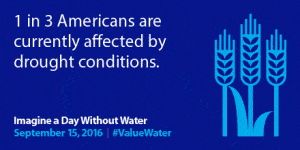 Another challenge faced by utilities today is our growing national population combined with historic drought and climate change. This increased demand in the wake of a dwindling supply is placing extra pressure on our water and wastewater systems, and requires thoughtful, long-term solutions if we are going to be able to meet current and future demands. Add to that the recent focus on our nation’s lead service lines and the fact that they absolutely need to be replaced, and it becomes clear that our water and wastewater systems are in desperate need of attention — and investment.
Another challenge faced by utilities today is our growing national population combined with historic drought and climate change. This increased demand in the wake of a dwindling supply is placing extra pressure on our water and wastewater systems, and requires thoughtful, long-term solutions if we are going to be able to meet current and future demands. Add to that the recent focus on our nation’s lead service lines and the fact that they absolutely need to be replaced, and it becomes clear that our water and wastewater systems are in desperate need of attention — and investment.
Imagine a Day Without Water is a national movement that is looking to change the way we look at water, which is currently highly undervalued. It is by far the least expensive of all of our utilities, and yet it is the only one without which we cannot live. Consider that the cost to repair our nation’s water and wastewater infrastructure will require an estimated investment of $4.8 trillion over the next 20 years, and it becomes apparent that the time to invest is now. The key to funding our nation’s water and wastewater systems is education and placing the proper value on water. It is crucial that legislators and ratepayers support utilities in their efforts to upgrade and replace infrastructure, to address the funding gap for these critical projects, and to acknowledge and address the water supply challenges that we currently are facing.
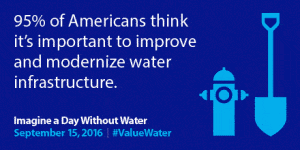 We have reached the point where we must proactively address and invest in our nation’s water and wastewater infrastructure — before it is too late. Imagine a Day Without Water is a day in which we can all spread the word about the value of water by encouraging friends, family, and colleagues to imagine what their lives would be like without water. With proper planning and smart investment from both consumers and our legislators, living without water is something that will never come to fruition in our nation. Join the movement today by participating in Imagine a Day Without Water. For the many no-cost ways in which you can participate, including signing a petition, joining a Thunderclap, and becoming involved on social media, please visit https://imagineadaywithoutwater.org/participate.
We have reached the point where we must proactively address and invest in our nation’s water and wastewater infrastructure — before it is too late. Imagine a Day Without Water is a day in which we can all spread the word about the value of water by encouraging friends, family, and colleagues to imagine what their lives would be like without water. With proper planning and smart investment from both consumers and our legislators, living without water is something that will never come to fruition in our nation. Join the movement today by participating in Imagine a Day Without Water. For the many no-cost ways in which you can participate, including signing a petition, joining a Thunderclap, and becoming involved on social media, please visit https://imagineadaywithoutwater.org/participate.
